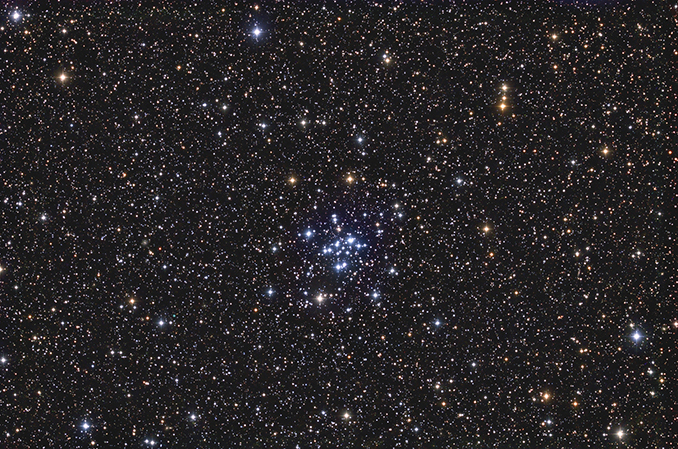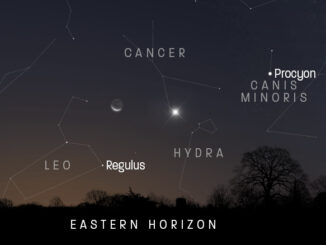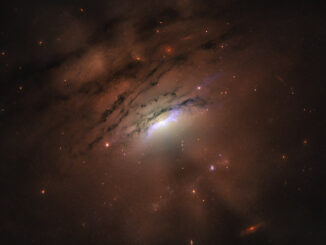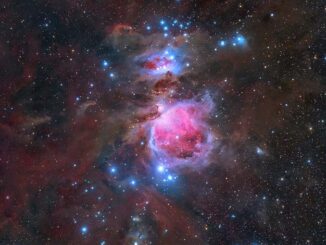
Messier 34 (NGC 1039) in Perseus is a gem of an open cluster that offers something for all observers. It’s big and bright enough to be spied with the naked eye by eagle-eyed observers under a very dark sky. More realistically for UK observers, it’s a grand binocular target, with even a small pair of binoculars revealing its brightest members, and splendid views are easy to enjoy through large binoculars and small telescopes, such vistas being confirmed by the beautiful portraits astro-imagers routinely secure.
Messier 34’s position in Perseus, which lies close to the zenith on late evenings in November, gives it the advantage of being circumpolar (never setting) from the UK. Shining with an integrated magnitude of +5.2 across its 25-arcminute form (some sources catalogue it as large as 35 arcminutes), it lies on Perseus’ western border with Andromeda, just over five degrees west-north-west of Algol (beta [β] Persei), the famous eclipsing binary variable star.
M34 is loose enough that a pair of 7 x 50 binoculars can show its brightest dozen or so brightest stars, glowing at about eighth- to ninth-magnitude. A small telescope, say around 80mm (~three inches) in aperture, operating at low magnification, can reveal dozens of stars, which form easier-to-see distinctive lines and groups with increasing aperture.




